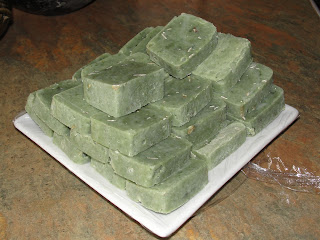Now you may not believe me but this chair cost less than £5 to do.How? You may be asking, well I found the chair by the bin (someone had actually thrown it out, no fabric ripped, no broken legs), I already owned the staple gun, the staples, the fabric and the wadding.The only thing that I needed to buy were the foam pads for the seat and back.
Despite the length of time this project took to complete it was very worthwhile and I will enjoy all the sitting and crafting I will be doing in this chair.
If you want to copy me and replicate this project you will need:
Chair or stool
Craft Knife
Bread Knife
Staple gun Staple remover (A flat head screwdriver will work but it takes longer)
Staple Gun
Staples (make sure you have plenty)
Scissors
Foam Pads for Seat (and Back if your chair has one)
Wadding
Eye Mask or Goggles
Flat Noses Pliers
Heavy duty gloves- Optional
Step One: Organise Yourself
Put on your Goggles and make sure that you have everything thing you need for the first few steps to hand.
Step two: Remove the old Fabric
Use the craft knife to cut the fabric, do this carefully as you may find that the wadding and pad underneath are reusable, although they still need to be removed. (I didn't take that time as I needed to strip back to the frame as it had been raining and I didn't want the frame to rot, at this point I left my chair skeleton to dry, hopefully you won't have to do this). While you are stripping the chair frame take time to notice how the chair was originally upholstered, take photos if necessary. I will explain why later.
Step three: Get rid of the old staples
Remove all the old staples using the staple remover and the pliers, you should probably be wearing gloves but I found it fiddly enough without wearing gloves. (My main excuse is that I'm a lady with lady sized hands and the Heavy duty gloves I have fall off if I drop my hands to my sides). If you can't get the staple out and it's close to the surface of the wood use your staple gun and bash it down. You don't want to do this to much as it will make it difficult to staple when your re-upholstering later.
Step Four: Checking the seat
Place the seat pad on the chair and sit on it, the chair will either fill saggy or not. Mine had a little slag so removed the staples from one side of latticed straps and pulled them tighter and re stapled. When I re-checked the seat it felt great.
Step Five: Sizing and securing the seat pad
You can use a paper template made by placing it on the chair skeleton and making out the outline where the seat pad will go. As it is unlikely that the chair will be square like the pads are generally sold, use the bread knife to cut the pad, trying to cut in the downward direction only. (I have never perfected that skill so my edges were a little ragged). Use your staple gun to secure in place with a couple of staples placed just above the base of the pad no more than 1cm.
Step six: Wa Wa Wadding
Cover seat pad with the wadding making sure that the wadding covers over sides of the chair. Staple from the middle of each side, started on the right side, pulled the wadding alittle on the left, stapled, front then back. The repeating again so that all the wadding is secured across the sides evenly. Make hospital corners on the corners by folding in the fabric and ensure that you don't leave unsightly bulges. I cut all the excess wadding away once I was happy.
Step Seven: Repeat this if your chair has a back that you want to cover.
Step Eight: It's time for the fabric

The idea is the cover the chair so it looks as professional as you can, so this is when those photos you took or the mental notes you made come in handy. Cover with your chosen fabric like with the wadding in Step Six the only difference is that you will stapling your fabric to the underside of your chair frame. Start with a few staples on each side, once you have all four sized secured in the middle, Make your hospital corners. Use your scissors, cutting against the chair legs so vertically, then cut horizontally about 1cm below the seat of the chair frame. The aim is the fold up these corners that sit over the legs so that they are the same height as the fabric that is stapled under the chair frame creating a beautiful continuous line. You repeat this to cover the back of the chair.
TTNF
MagpieSpirit









































.jpg)
